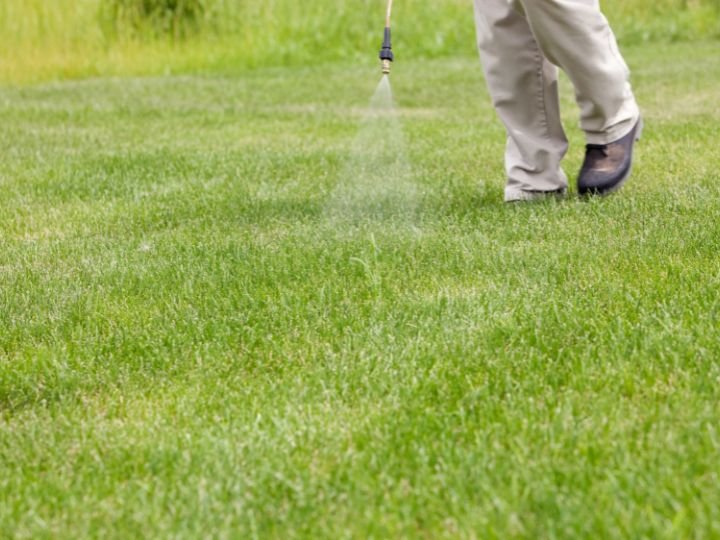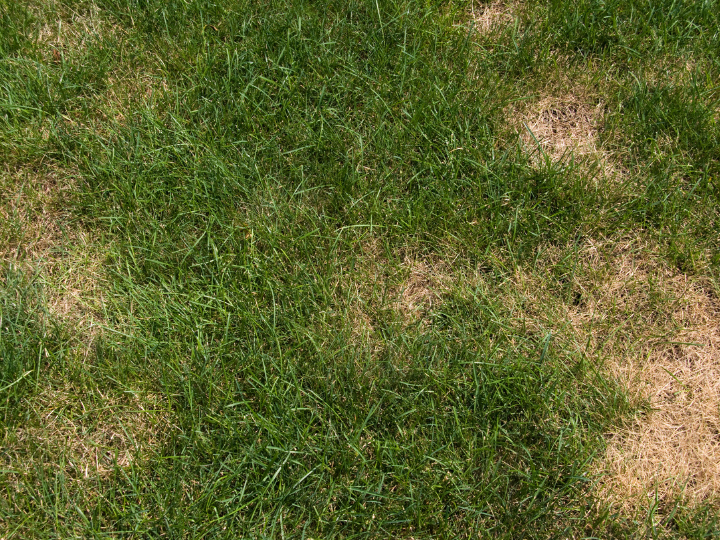Post-Emergent Weed Control
The best way to achieve effective post-emergent weed control is through post-emergent herbicides. DTE Golf® explains everything about post-emergent weed control in this article including what post-emergent herbicides are, types of post-emergent herbicides, and when to apply them, and how to apply them.
What are Post-Emergent Herbicides?
Post-emergent herbicides are effective against weeds that have already started sprouting or are fully grown. Hence the term post-emergent. Pre-emergent herbicides are used before the early signs of weeds appear.
Using a post-emergent herbicide helps control the existing weeds and prevent more from growing. The market has a wide range of post-emergent weed killers targeting different weeds which is why it is important to check the description carefully and use the herbicide that will be effective for the weeds on the golf course. Also, check its application rate and active ingredients to see if they are safe to use around the grass type on your golf course.
Depending on their type, post-emergent herbicides either get absorbed into the weeds and kill them starting from their roots or attack the weeds’ foliage. These are available in both the granular and spray-on formula applications. However, it is important to use them consciously while spraying or applying over the weeds so that the surrounding grass on the golf turf is not affected.
Types of Post-Emergent Herbicides
Post-emergent applications have two different categories:
Systemic Herbicides - Selective post-emergents kill the weeds from the root. They get absorbed into the weed plant through the roots. These are most effective against perennial weeds and prevent them from growing again.
Contact Herbicides - Contact herbicides attack the exposed part of the weeds like the foliage. Because the leaves are attacked, the weeds cannot photosynthesize, and so end up dying. This, however, is not a permanent solution as the roots of the weeds are not killed. So, there is a chance that weeds can recur. Therefore, contact herbicides are mostly used to kill annual weeds and other smaller weeds.
The post-emergent herbicides are also classified as selective and non-selective herbicides:
Selective Herbicides - Selective herbicides are formulated only to kill the weeds mentioned on their label; they do not affect the surrounding turfgrass on the course.
Non-Selective Herbicides - Non-selective indiscriminately kill all the vegetation they come in contact with. So, these are often used for broad weed control in sections of the golf course where weeds have completely taken over.
When to Apply a Post-Emergent Herbicide?
In simple words, apply whenever there is a presence of weeds on the golf course. However, application at the right time of year and day are vital factors one needs to keep in mind with post-emergent herbicides. This helps in ensuring that the application is fully effective.
Time of Year
The best time of the year to apply the post-emergent herbicide is during spring. This is the time when weeds are small and actively growing. During this phase, they can easily absorb the weed killers. The peak application period is when daytime temperatures have been under 85 degrees and soil temperature around 55 degrees for at least three consecutive days.
You can apply post-emergent products until late summer and once you find the daytime temperature going beyond 85 degrees, you only need one application to get rid of the weeds. It is essential to wait until the grass has fully recovered from drought or disease (if any) before applying post-emergent herbicide to ensure the golf greens are not affected by post-emergent applications.
Time of day
The best time of the day to apply a post-emergent herbicide is in the morning. This is the time when you can find weeds growing at a faster pace. The weed growth remains slow during the afternoon and evening time. Hence it takes time for the post-emergent to get absorbed.
Make sure you check the weather. If you have a forecast for a rainstorm on your decided day of post-emergent herbicide, make sure you do it much earlier than the rain comes. Or you can push your application schedule ahead until you get a dry day for it. DTE Golf® recommends avoiding spraying during windy days as it can lead to an uneven application that can affect the surrounding turfgrass.
How to Apply Post-Emergent Herbicides?
There are two options to apply post-emergent herbicides - blanket or spot treatment. The former is a good option when large sections of the golf course are affected by weeds, while the latter is effective when you have to get rid of a few weeds in one section.
For granular post-emergent, you would need a spreader; however, for liquid, you would need a sprayer tool. This method is effective with selective post-emergents, or you may end up killing healthy grass along with the weeds in the entire golf turf section being treated. Also, when applying herbicide to a large portion of the golf course, it tends to be more costly than spot treatments.
Start applying in a back-and-forth motion in the entire affected area like you would apply fertilizer. An even application is essential for the application to have the same effect on the entire area. Some liquid and granular post-emergent herbicides require watering after the application. Adding a spray indicator dye to the application will help apply it evenly across the affected area.
Spot Treatments
Spot treatments focus on a few weeds in one area of the course. Selective herbicides are best for this as they will only attack the weeds and not the surrounding golf grass. If you decide to use a non-selective post-emergent for spot treatment, ensure that you spray the application directly onto the weeds carefully, protecting the surrounding turf from the application.
Using a steady hand is essential to apply liquid post-emergents with spot treatment. It is both a time and money-saving option compared to blanket treatment. Spot treatment often includes choosing selective herbicides. Follow the instructions on the label, checking the quantity of water you need to mix with the weed killer for a safe application.
In conclusion, post-emergent herbicides are an effective method to control already existing weeds on the golf course or any new weeds that suddenly pop up. However, use care when applying these chemical products to the golf green as they can affect the healthy turfgrass if you are not careful. For best results and effective weed control, hire DTE Golf® for professional golf course services.


